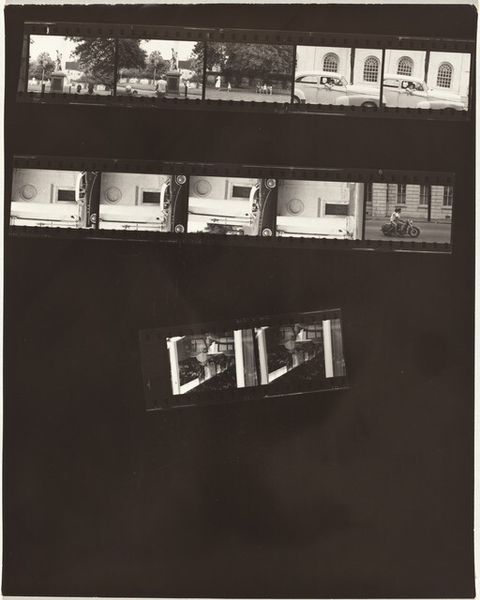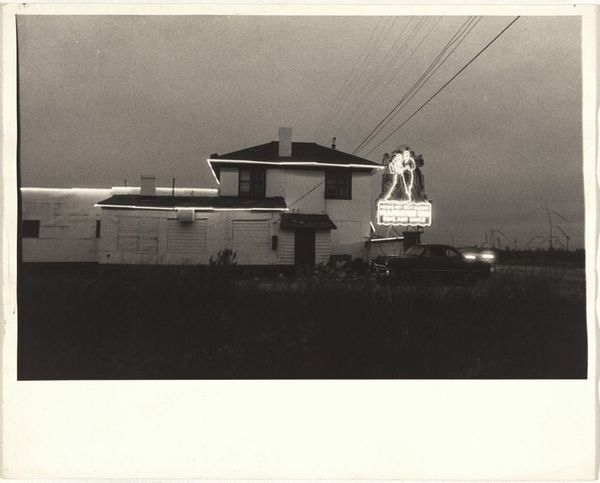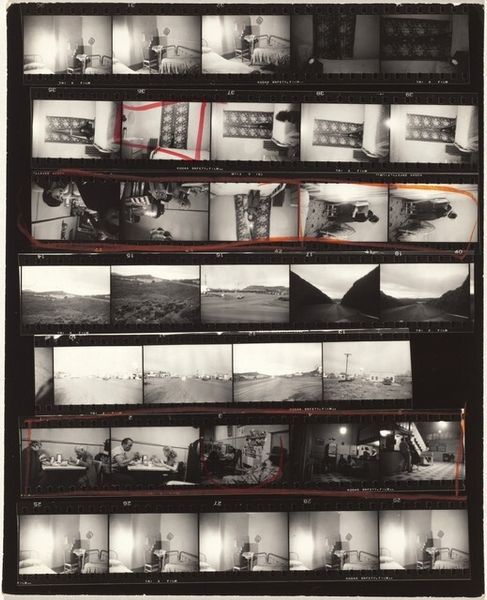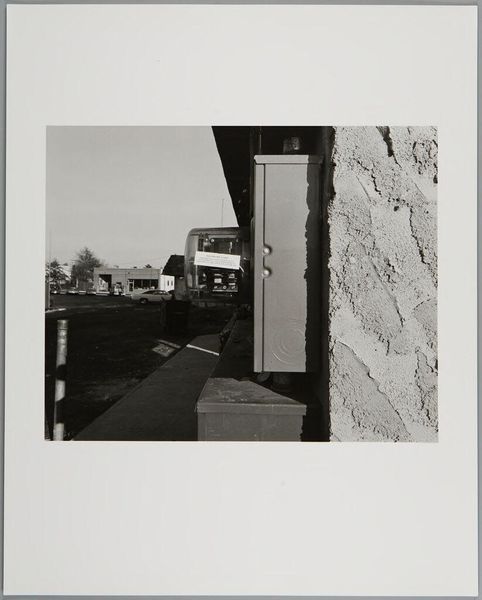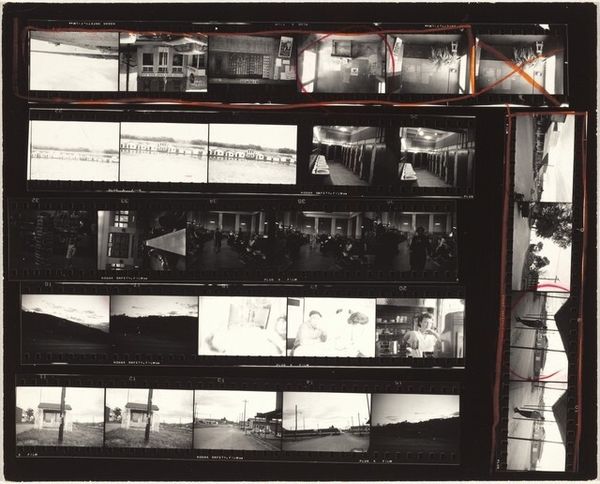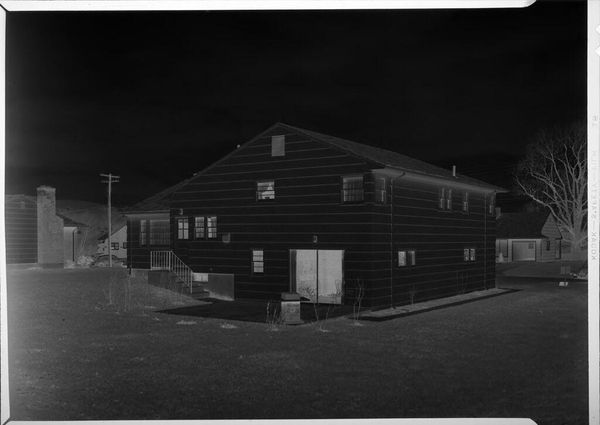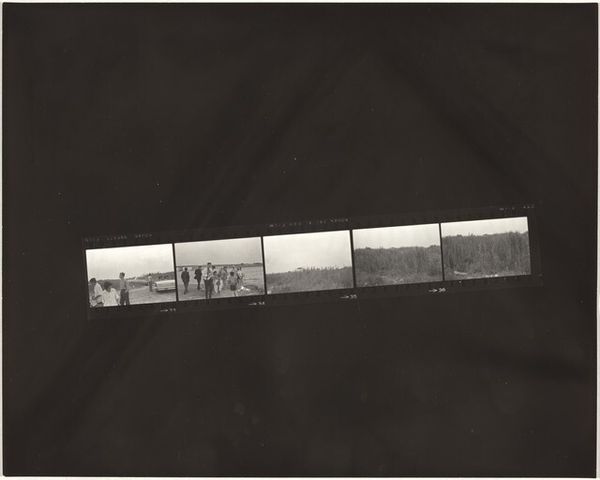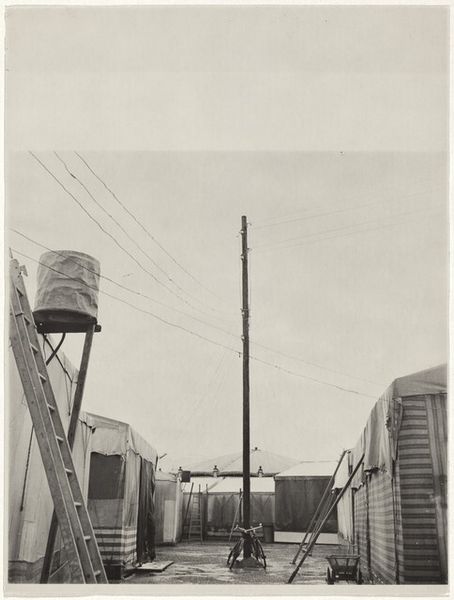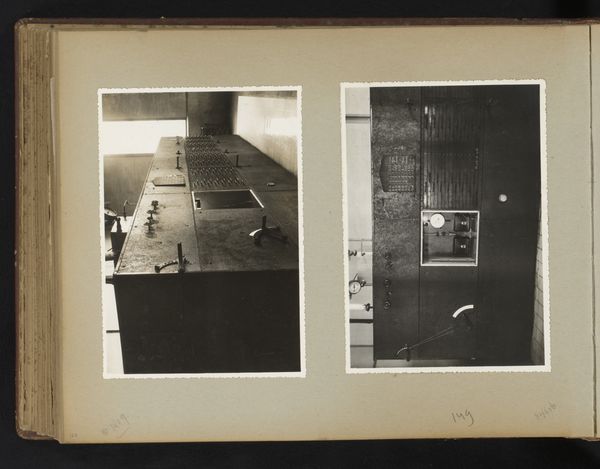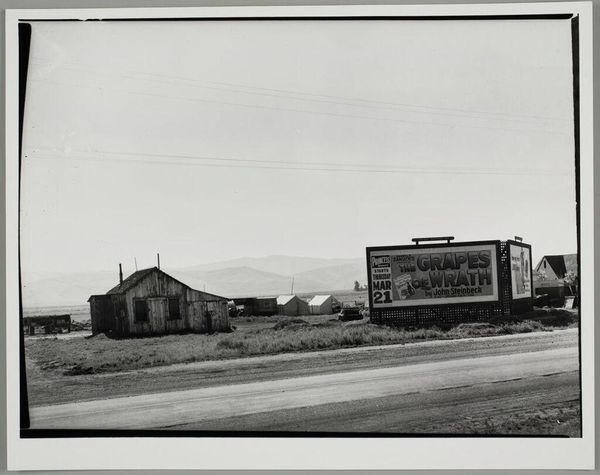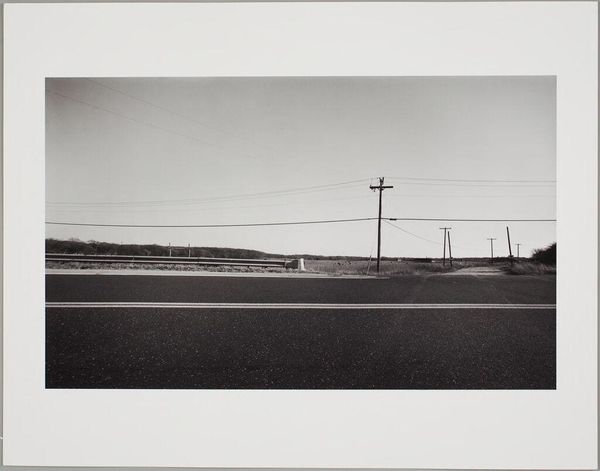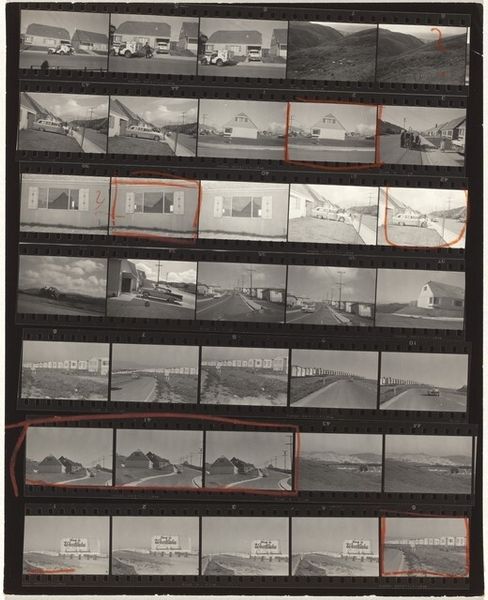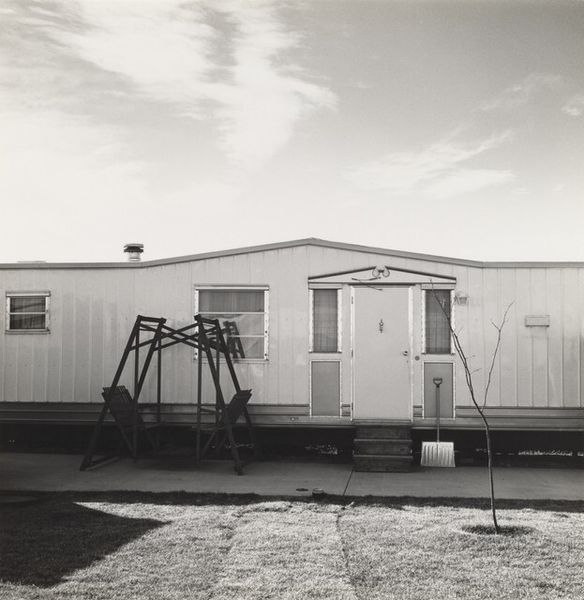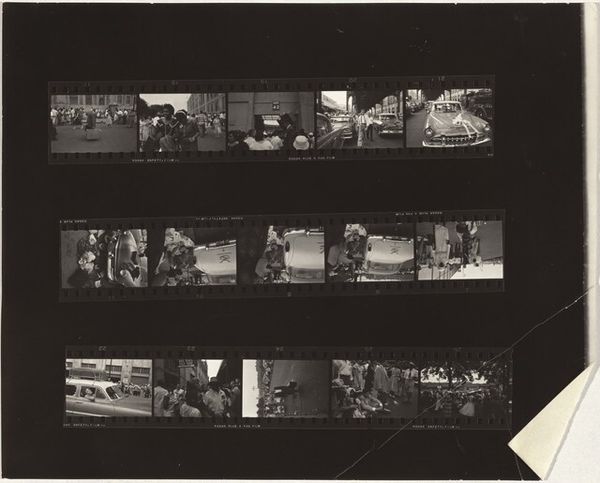
photography
#
film photography
#
landscape
#
street-photography
#
photography
#
cityscape
#
monochrome
Dimensions: sheet: 50.3 x 80.2 cm (19 13/16 x 31 9/16 in.)
Copyright: National Gallery of Art: CC0 1.0
Curator: This work is titled "I Want to Escape," created by Robert Frank in 1993. It’s a photograph composed of four distinct monochrome images. Editor: Oh, wow. Immediately I feel a starkness, almost a bleakness. The high contrast pulls you in, doesn’t it? It's like fragments of a forgotten town. Curator: Frank was really playing with the idea of photographic collage here, piecing together these seemingly disconnected scenes. It's important to note how he layers personal emotions by integrating text, specifically a handwritten note. Editor: The handwritten element gives it a raw, very personal charge, like a diary entry almost. And then pairing it with those austere architectural shapes. Makes you wonder, what's he escaping from? What's he escaping towards? Curator: The landscapes presented speak volumes. We see ordinary structures: a roadside building, what looks like the back of a motel, barren land. Frank's career was shaped by documenting these types of marginalized environments. Notice that nothing is romanticized or stylized here. It is utilitarian, functional architecture. Editor: Absolutely. There’s this incredibly human desire at play in the handwriting, almost desperate, juxtaposed with these lifeless spaces. Like the built world itself becomes the prison. I am intrigued by his bold and unconventional use of the materiality, incorporating this almost gestural scribbling. Curator: Right, it's an intervention on the photograph, adding another layer of production, like scratching away at the glossy finish and reminding you of its constructedness. That text gives a human presence but also points to a desire that everyone experiences regardless of social condition: escape. Editor: It does bring you back to the human element amidst what might seem like purely structural, formal compositions. I think that stark emotional cry coupled with such gray, formal, and somewhat rigid scenes makes the artwork resonant and so very compelling. Curator: I agree. Examining the social context of the work, we can consider Frank’s consistent focus on the mundane, using it to express longing. He urges us to see our environment for what it is: human made. Editor: Thanks, this was amazing! It makes me ponder not only Frank’s personal yearning but the quiet despair inherent in our everyday surroundings. Curator: Precisely, art acts as both a mirror and a portal. Thank you.
Comments
No comments
Be the first to comment and join the conversation on the ultimate creative platform.
